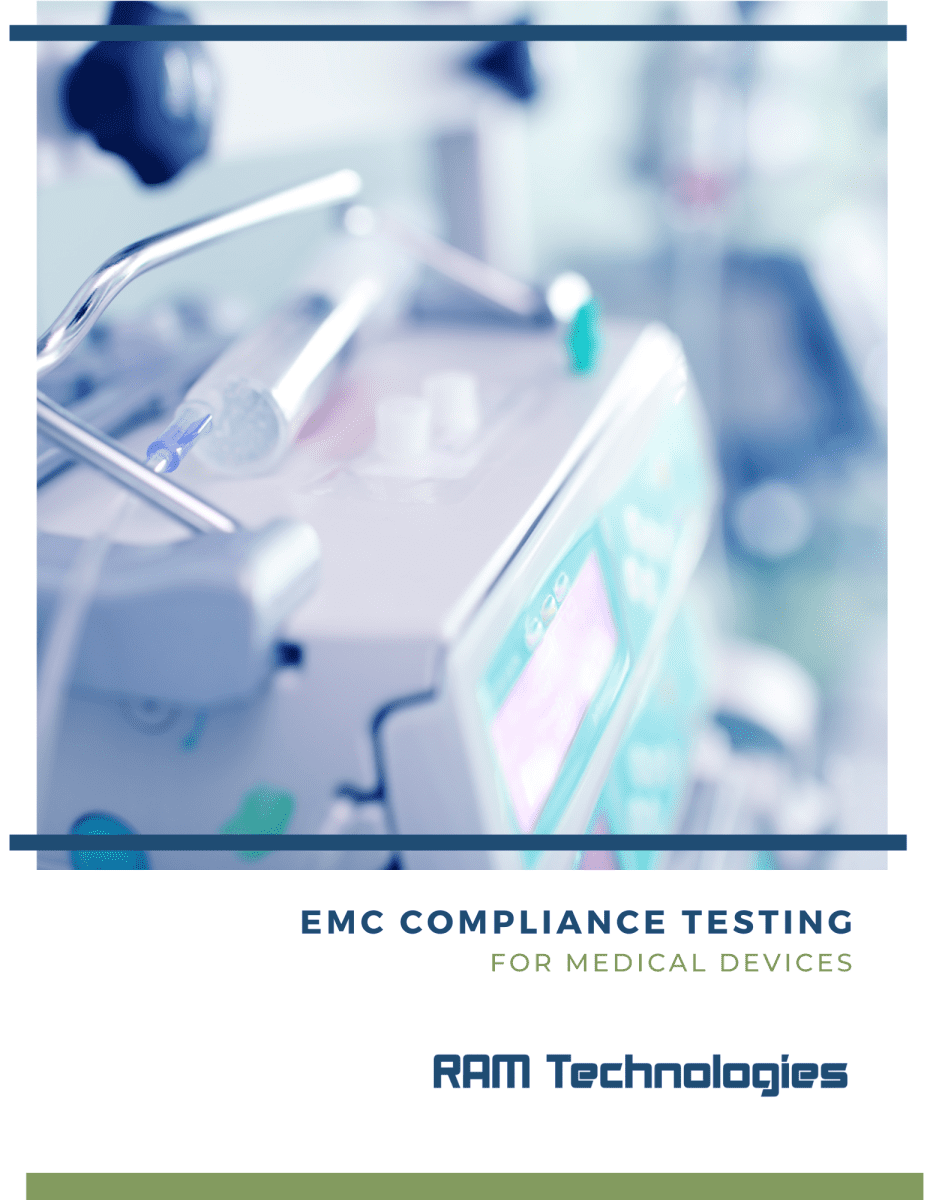EMC Compliance and EN 61000-4-4: What Medical Device Manufacturers Should Know About EFT Level 3
Sudden, short-duration voltage spikes, also known as bursts, can cause problems for medical devices. If devices cannot handle these bursts, consequences can include anything from brief performance interruptions to physical damage and fires. Safety and reliability are paramount for medical devices, so here’s what manufacturers should know about the EN 61000-4-4 electromagnetic compatibility (EMC) standard.
What is EN 61000-4-4?
EN 61000-4-4, also known as IEC 61000-4-4, is an EMC standard that tests how well electronic and electrical equipment, including medical devices and equipment, can handle bursts of energy in the form of short-duration, sudden voltage spikes. Lightning strikes, motor starters, and switching power supplies can cause these bursts, which can result in malfunction, physical damage, or harm to the operator or end user.
How do you test for EN 61000-4-4?
The test for IEC 61000-4-4 is meant to determine whether the equipment can handle bursts of energy, so a series of voltage spikes get sent to the device being tested.
The equipment’s control ports, power supply, earth ports, and signal outputs all get tested with these voltage spikes. If the device malfunctions or loses data, the test fails.
Where do bursts come from?
In real-life applications, bursts come from switching transients, or sudden changes in current or voltage. These sudden changes happen when electrical circuits are switched on or off. Switching transients could come from voltage spikes after a transformer is turned off, or relay contacts bouncing when they are switched on or off, for example.
How to test for EN 61000-4-4
Equipment designed to operate on top of a table, is part of built-in equipment, or is mounted on walls or ceilings, can be tested with the equipment 0.1m above the ground reference plane, give or take 0.01m. Equipment under test (EUT) that is on the ground or mounted in a different configuration can be placed on the ground with an insulating support that is 0.1m thick, give or take 0.05m. This support should also have non-conductive castors.
The equipment is then tested with burst pulse packages, with 75 pulses for each package. Each pulse within the burst is repeated in either 10µsec at 100kHz or 200µsec at 5kHz. The period between the bursts is 300msec. What gets used will depend on the product type and should be determined by product committees.
Environmental classes
Test levels also apply to the environment where equipment will normally be operated. These range in 5 levels – from Level 1 to Level X.
Level 1 is a well-protected environment, which is normally associated with a computer room. Level 2 is a protected environment, which may be part of a terminal room or control room of an electrical or industrial plant.
Levels 3 and 4 represent industrial environments. Typical environments belong to Level 3 and severe environments, such as power plants, belong to Level 4. For Level 3, equipment should be able to handle an EFT pulse of 4 kV on power supply inputs and 2 kV on control and signal ports.
If there are special situations that fall outside of the prescribed parameters, they may belong to Level X
What to Know When Choosing PSUs for Your Medical Device Under EN 61000-4-4
While PSUs do not need to be tested on EMC standards, our units will not impact your compliance. We’re happy to take one worry off your list! RAM Technologies’ power supply units meet the requirements for Level 3. Our PSUs are suitable for the vast majority of environments medical devices may inhabit.
You can find information on our downloadable data sheets, available on each power supply page. For any specific questions, send us a message.
RAM Technologies’ power supplies are 60601-1 3.2 certified and meet 60601-1-2 EMC standards. When you’re designing your medical device and need help with a PSU, contact us for details.

Download the EMC Summary
The road to putting your medical device on the market includes many steps, including passing all necessary electromagnetic compatibility (EMC) testing. These tests play an essential role in ensuring your device doesn’t emit a significant amount of electromagnetic interference, which could be via conducted or radiated emissions. Download our guide to EMC compliance to learn more about what medical device manufacturers should consider.
More Resources:
Downloadable Guide to IEC 60601-1
EMC Compliance and EN 61000-4-6: Conducted Immunity
EMC Compliance and EN61000-4-11: Voltage Dips, Short Interruptions
EMC Compliance and EN 61000-4-5: Surge
